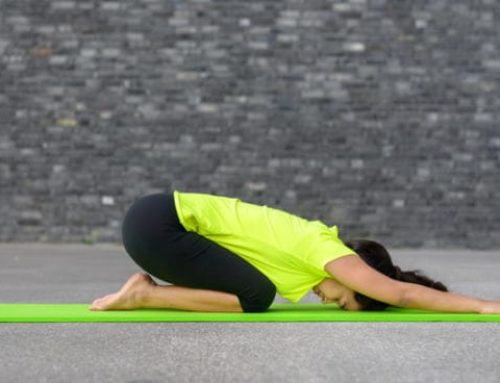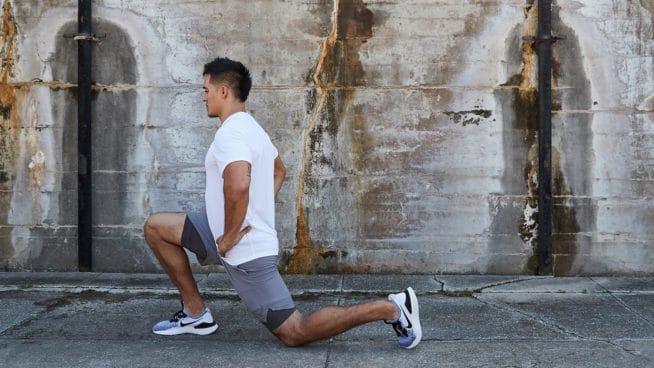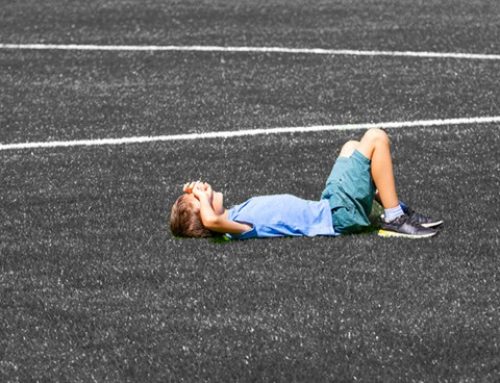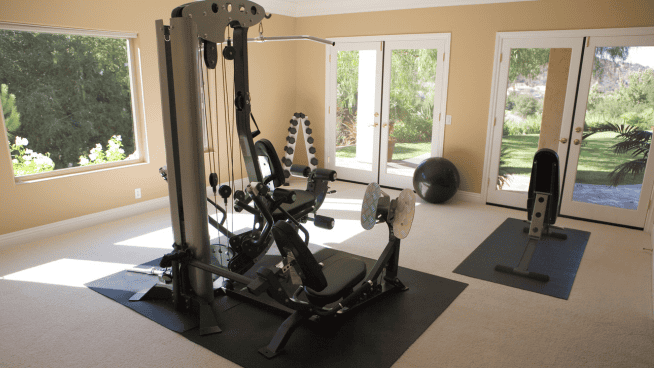Hockey players are incredibly powerful and explosive athletes. Although hockey training primarily focuses on developing these attributes, it’s crucial that power doesn’t come at the expense of mobility and flexibility.
The best way to avoid muscle injury in hockey is to stay within a safe range of muscle tension. You need a certain amount of muscle tension for an explosive first step or sharp cut, but if your flexibility is too tight or too loose, you’ll increase your risk of injury. With this in mind, you want to find a warm-up and cool-down that include stretching, while avoiding too much mobility work.
A good mobility program for hockey players pays special attention to the hip flexors. Most of the positions a hockey player goes through during a game—low and ready to explode, low in the skating stride, changing momentum during a turn or a stop, and getting to and from the bench—combine a shortened stance, powerful drive and strong recoil, wreaking havoc on the hip flexors.
To maintain a healthy length and tension relationship in the hip flexors, one of the best stretches is the Low Lunge Yoga Series. Begin by stepping forward with left leg into a Lunge and lowering the right knee to the floor to assume a half-kneeling position. Flex right glute and engage abs. Reach overhead with right arm and gently press hips forward until you feel a slight stretch (photo 1). Inhale, exhale and gently lean to the left for a lateral stretch (photo 2). Rotate torso to right and look up at hand.

Photo 1

Photo 2

Photo 3
Perform this sequence consistently after practices, games or workouts. But remember, this stretch addresses only a single link in the chain and won’t be the answer to all mobility problems. Learn more hip flexor stretches and check out our Flexibility Guide for more stretches and mobility drills to round out your program.
RECOMMENDED FOR YOU
Hockey players are incredibly powerful and explosive athletes. Although hockey training primarily focuses on developing these attributes, it’s crucial that power doesn’t come at the expense of mobility and flexibility.
The best way to avoid muscle injury in hockey is to stay within a safe range of muscle tension. You need a certain amount of muscle tension for an explosive first step or sharp cut, but if your flexibility is too tight or too loose, you’ll increase your risk of injury. With this in mind, you want to find a warm-up and cool-down that include stretching, while avoiding too much mobility work.
A good mobility program for hockey players pays special attention to the hip flexors. Most of the positions a hockey player goes through during a game—low and ready to explode, low in the skating stride, changing momentum during a turn or a stop, and getting to and from the bench—combine a shortened stance, powerful drive and strong recoil, wreaking havoc on the hip flexors.
To maintain a healthy length and tension relationship in the hip flexors, one of the best stretches is the Low Lunge Yoga Series. Begin by stepping forward with left leg into a Lunge and lowering the right knee to the floor to assume a half-kneeling position. Flex right glute and engage abs. Reach overhead with right arm and gently press hips forward until you feel a slight stretch (photo 1). Inhale, exhale and gently lean to the left for a lateral stretch (photo 2). Rotate torso to right and look up at hand.

Photo 1

Photo 2

Photo 3
Perform this sequence consistently after practices, games or workouts. But remember, this stretch addresses only a single link in the chain and won’t be the answer to all mobility problems. Learn more hip flexor stretches and check out our Flexibility Guide for more stretches and mobility drills to round out your program.










